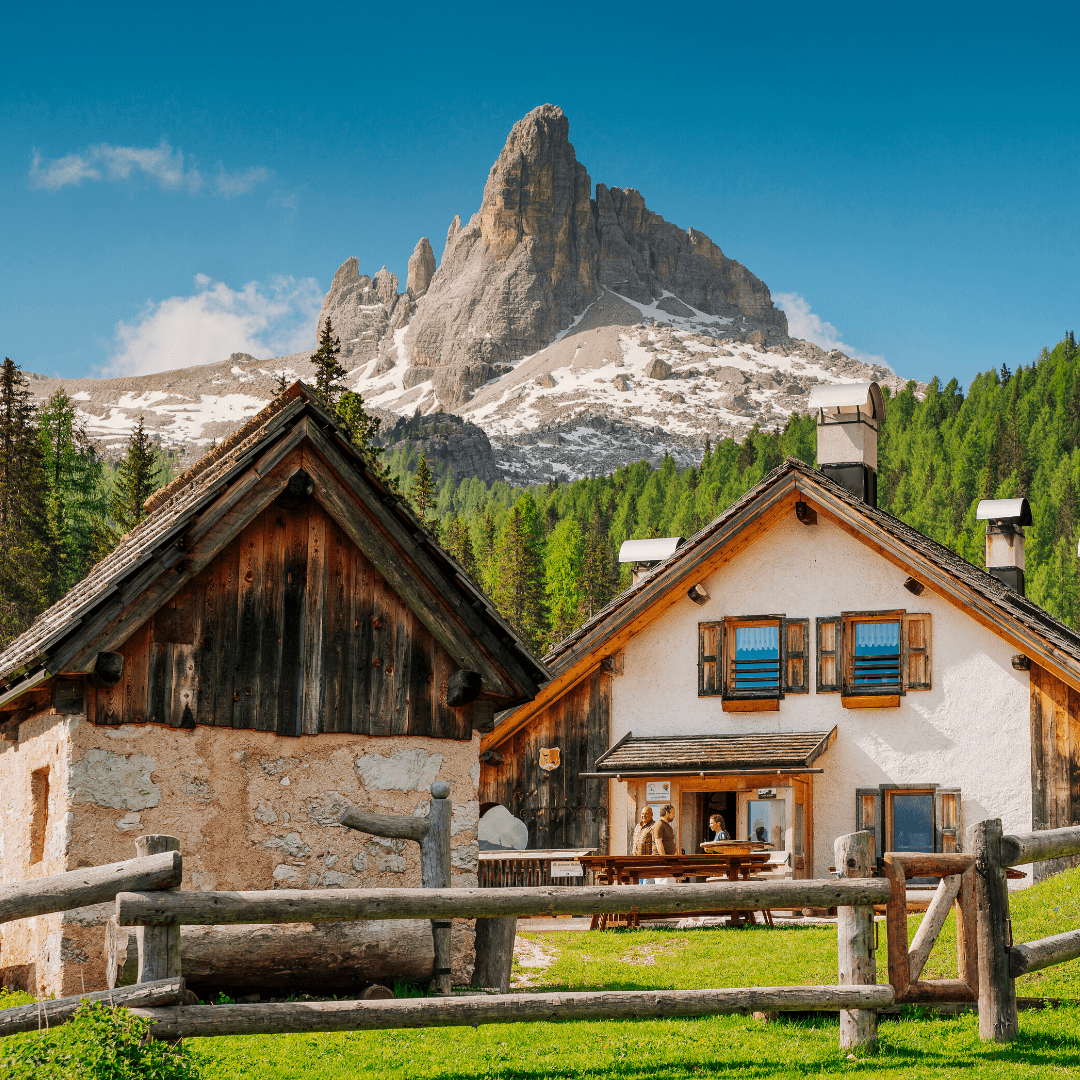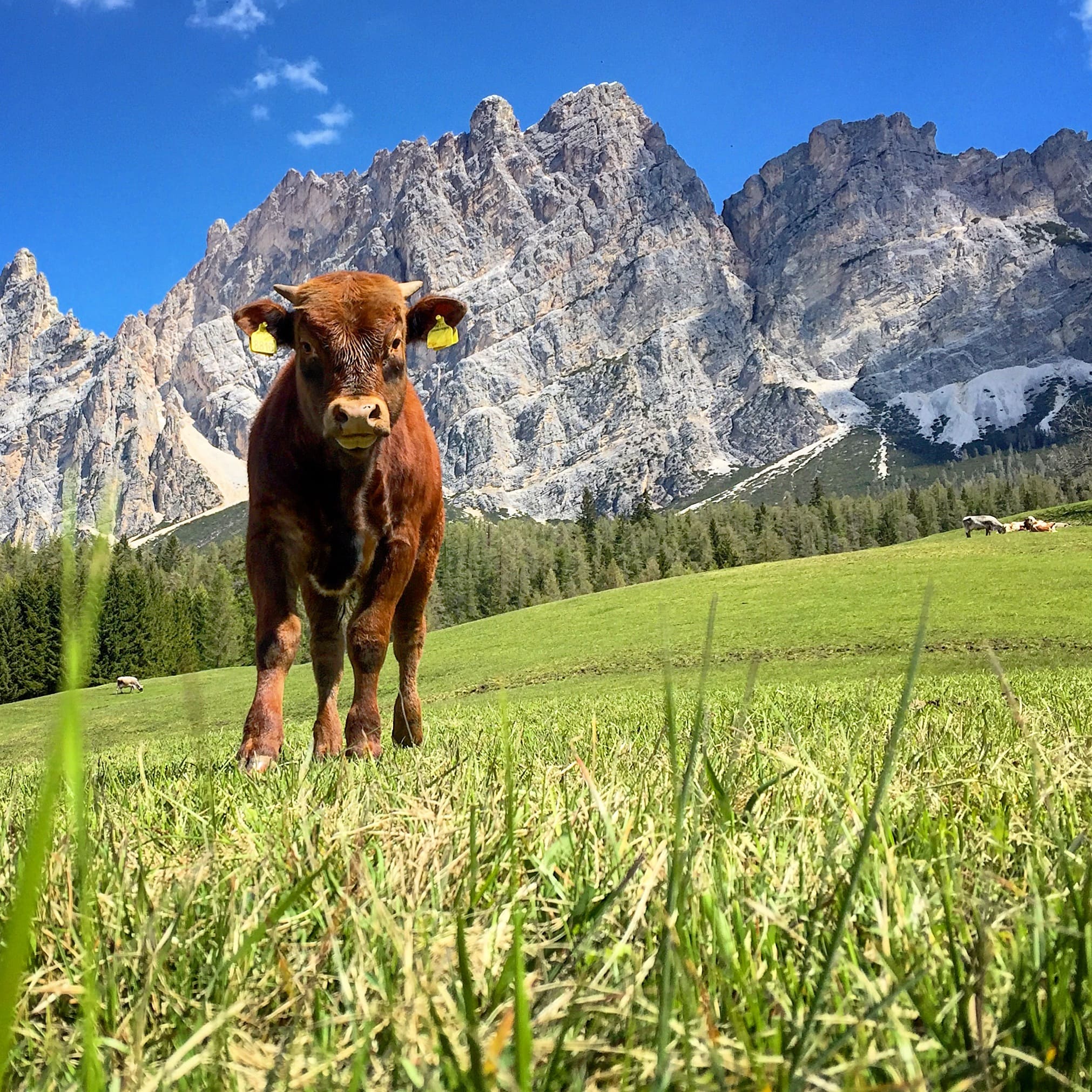Alpine farms, treasure chests of local cuisine
In the Alps malga, which could be translated as Alpine farm, is the building where traditionally shepherds and cowherds live in the summer, when cows, sheep and other animals graze on mountain pastures.
In the Ampezzo Valley, several Alpine farms have maintained their traditional use, with animals grazing all around, but at the same time they have transformed, becoming also refreshment places welcoming hikers and other guests.
Indeed, a malga is the perfect place to experience the strong link between tradition, the territory and food that is so central to the local cuisine. They serve mostly traditional recipes, oftentimes using local and self-produced ingredients.
A malga is the ideal refreshment place during a hike, to recharge with some well-deserved food followed by a flavoured grappa while sitting in a sun-kissed terrace and admiring the beautiful surroundings. But it can be a great place to head to also for a day out, especially with kids, who can play in nature and familiarize with the animals.
The malgas of Cortina play an important role not only in tourism, but also in keeping traditional activities alive and in protecting the environment, preserving the century-long balance between nature and humankind typical of Cortina.

Desmonteà, Cortina’s traditional cattle descent fest
Autumn is not just a spectacular season, but also the moment when Cortina goes back to a more traditional daily life, with fewer tourists around and everyone preparing for the winter. This is the time when cows, donkeys, horses and sheep come back to town after a summer spent in high-mountain pastures around the Ampezzo Valley: it’s the cattle descent, or desmonteà, as locals call it.
The desmonteà is a festive day by tradition: it used to be a very important moment of the year, marking the end of the warm season and the return in town not only of cattle, but also of shepherds and cowherds. In Cortina, the cattle descent is still celebrated around half October every year. On the day of the desmonteà, the area around the bus station is packed with cows, donkeys and other animals for everyone, and especially kids, to admire.
Local farmers sell their products at small stands, kids can have a mid-morning snack with local food and everyone is invited to have a traditional mountain lunch with sausage, polenta and local cheese at the marquee erected for the occasion.
But why is cattle taken to high-mountain pastures in the first place? It is for them to eat different types of grass, drink the best water and live in the most pristine environment. This reflects on the food they produce! For example, it is proved that cows spending the summer in the mountains produce a cheese richer in omega-3 acids.
But why is cattle taken to high-mountain pastures in the first place? It is for them to eat different types of grass, drink the best water and live in the most pristine environment. This reflects on the food they produce! For example, it is proved that cows spending the summer in the mountains produce a cheese richer in omega-3 acids.

